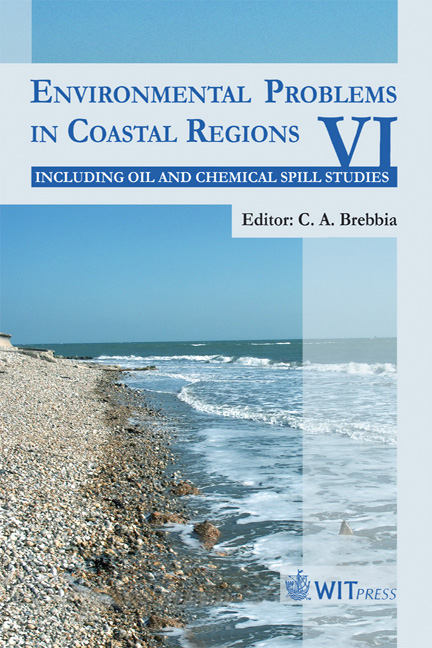Trace Metals In Soft Tissues Of Two Marine Gastropod Molluscs: Monodonta Turbinata B. And Patella Caerulea L. Collected In A Marine Reference Ecosystem
Price
Free (open access)
Transaction
Volume
88
Pages
9
Published
2006
Size
603 kb
Paper DOI
10.2495/CENV060011
Copyright
WIT Press
Author(s)
M. E. Conti, M. Iacobucci, M. Mecozzi & G. Cecchetti
Abstract
Monodonta turbinata B. and Patella caerulea L. were evaluated as possible biomonitors of trace metal contamination in marine coastal areas. These species are marine gastropod molluscs; they are distributed in all coastal areas of the Mediterranean sea and are easy to identify and available all year round. They have the necessary prerequisites for use as biomonitors. The first aim of this preliminary survey is to evaluate the concentrations of Cd, Cr, Cu, Pb and Zn present in soft tissues of the selected species. Samples were collected in the tidal zone (1-2 meters depth) in a possible reference ecosystem (Linosa island, Sicily, Italy). Five coastal stations were selected according to the species availability. The second purpose was to establish the validity of these two gastropod species as bioaccumulators. The station number 4 (Pozzolana di Ponente) is the only site in Italy where the sea turtle Caretta caretta, annually deposes her eggs; thus this station is of a particular ecological relevance. In order to test the bioaccumulation capabilities of these biomonitors seawater samples were collected in each site to assess soluble metal concentrations and then CFs. Seawater samples were collected appropriately in a 6-month period of sampling in the selected stations. Statistical multivariate analyses, PCA, were applied to test the differences between metal concentrations in different sites and species. Results showed high results (CFs) with respect to the concentrations in marine waters (soluble fraction). This confirmed the suitability of these species for biomonitoring purposes. PCA analysis showed clearly two separated patterns of bioaccumulation (i.e. Patella and Monodonta) and no significant differences (p = 0.05) for trace metal accumulation were obtained between the studied sites. This finding agrees with the hypothesis of this island as reference ecosystem for intraspecific comparison within Tyrrhenian areas.
Keywords





